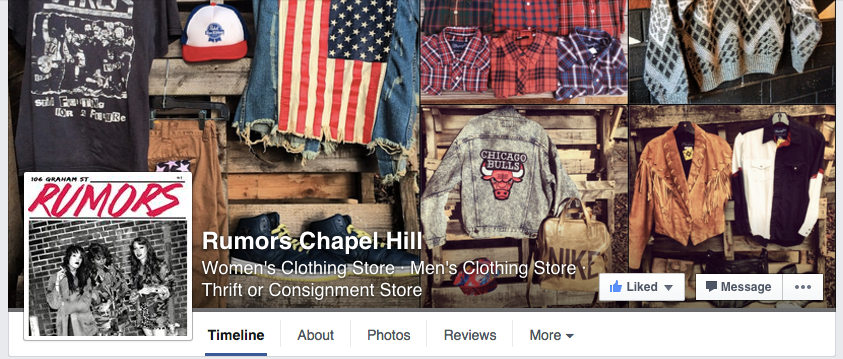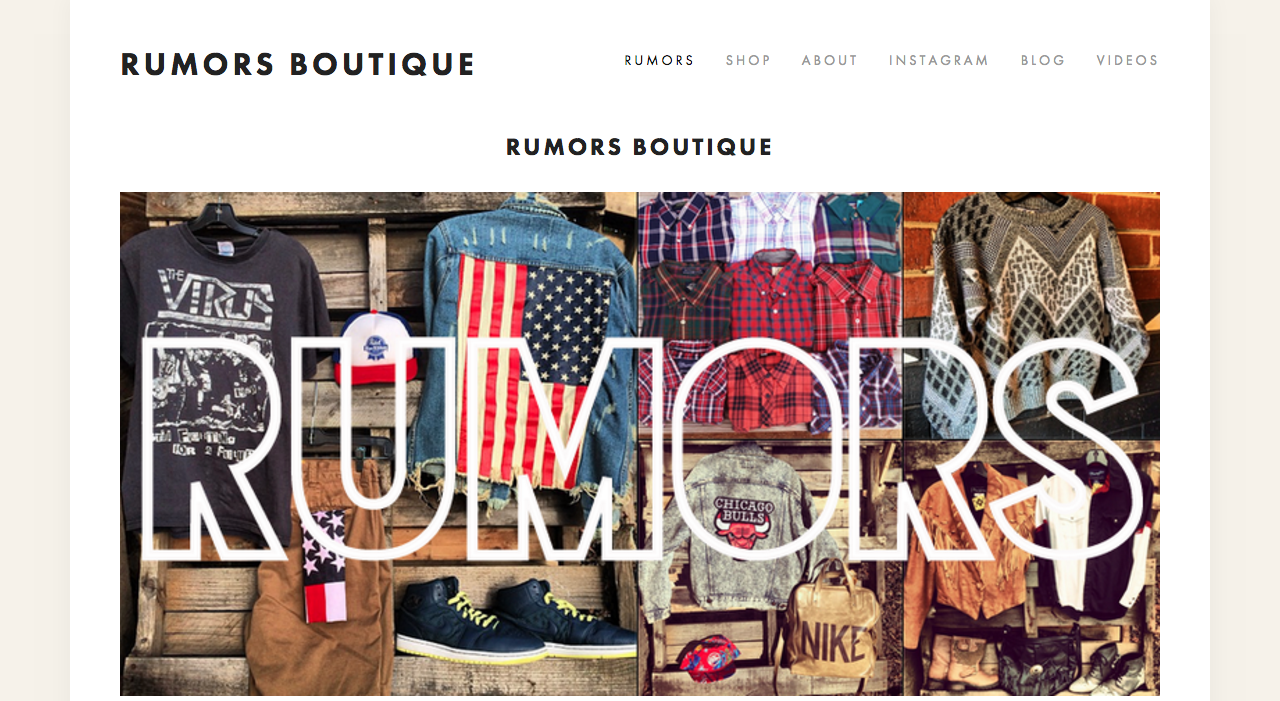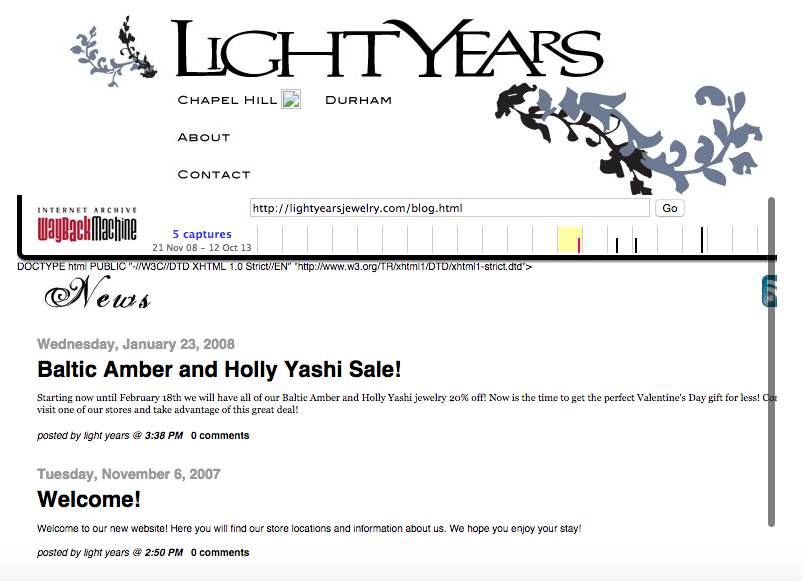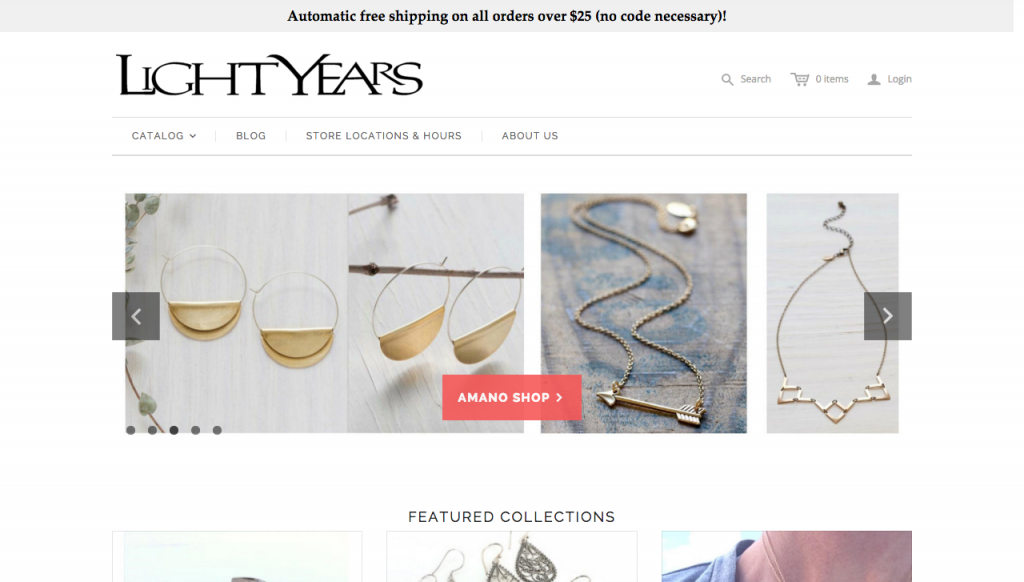When I picture my favorite restaurants and shops, I often visualize their logos. But with Rumors, I don’t picture a concrete graphic. Instead, a muddle of Instagram photos take over my mind. I picture Rumors’ outside patio area, which sits nicely between the Baxter Arcade and Beer Study.
Although Rumors has only been open in Chapel Hill since the fall of 2013 (there are two other Rumors shops – one in Florida and one in Virginia), it has seen explosive success on social media, both in followers and engagement. Rumors doesn’t rely on a memorable logo to drive its branding, but that doesn’t mean it isn’t using visuals. Consistent photos of outfit pairings and just-in merchandise flood Rumors’ social media accounts and continue attracting new customers.
LOGO
The closest Rumors gets to a logo is perhaps the lettering featured in its Facebook profile picture. This logo isn’t featured anywhere else – not on its other social media accounts nor its website. Considering Rumors’ wild success on social media, perhaps no logo is necessary. But to promote recognition and consistency, Rumors should at the very least consider matching its profile pictures across social media accounts.

BUILDING SIGNAGE
Through its building signage, Rumors promotes itself as stylish and trendy yet vintage and classic. It combines thin and clean lettering on its window with an old-school sign bordered by light bulbs. This juxtaposition of new and old caters to Rumors’ youthful market of hipsters.
💜 It’s true 💜 Open 11-7 for ya come thru 😘 #rumors #shoplocal #thrift #chapelhill
A photo posted by Rumors Boutique Chapel Hill (@rumorsnc) on
WEB DESIGN
Rumors Chapel Hill shares its website with the two other Rumors boutiques, located in Miami and Richmond. This makes it difficult to establish itself as an independent shop and refer consumers to its social media accounts, but the web design is still consistent in some ways. It’s also easy to navigate and free of slow-to-load animations.

The website contains a few holes, however. With as much personality as Rumors shows in store and on social media, I would have expected it to keep up with a blog — content could range from posting merchandise to suggesting outfit pairings to offering money-saving tips to providing DIY tutorials. Alas, the Rumors blog is nonexistent.

SOCIAL MEDIA
Facebook – 6,119 likes
Twitter – 112 followers
Instagram – 5,529 followers (and 12,476 posts !!)
I can’t think of any local business that has made a bigger impression on social media than Rumors. It posts photos of its latest merchandise on Instagram several times a day, which aligns with the fast-paced social media culture of its younger target audience.
A lot of the success can be chalked up to Rumors’ consignment shop business model. When it’s selling authentic brands like Doc Martens at low prices, consumers are given a high incentive keep up with Rumors’ social media. But isn’t that what social media is all about — understanding your audience and providing a resource based on their interests? Rumors also engages with its audience and promotes authenticity by using locals for its models.
Another interesting aspect of Rumors’ social media strategy is its preference of Facebook and Instagram over Twitter. Rumors hasn’t posted original content to Twitter since October 2013, about a month after it opened. I suspect the shop owners realized quickly that Instagram and Facebook were more lucrative considering their younger consumer base and high volume of photos.
THE BOTTOM LINE
Since smaller businesses are often more limited by money and time, it’s important to prioritize certain branding efforts over others. Rumors has prioritized its Facebook and Instagram accounts over other aspects like logo development and blog writing. As it continues to grow and gain more resources, Rumors should consider expanding its branding efforts beyond Facebook and Instagram. But for now, its social media presence is impressive on its own.





